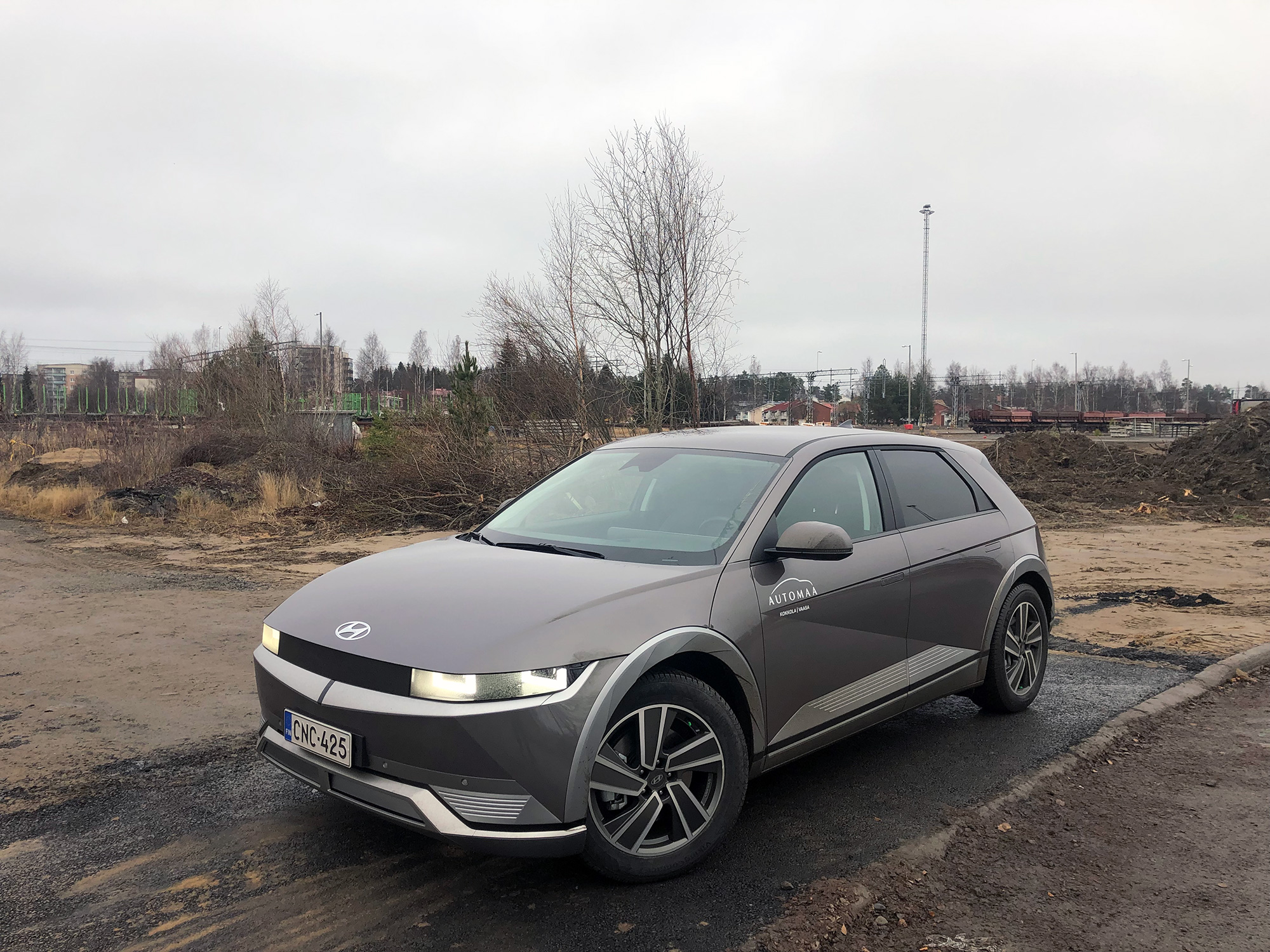Hey, who decided to make me the EV correspondent here? No one, and that’s exactly why I’m still a guy who writes down vaguely automotive-related thoughts whenever there’s a lull in my work life. I guess that’s the case with anyone who’s mentioned in the Hooniverse Masthead, isn’t it? But like any major dude with half a brain will tell you, it’s currently increasingly expensive to fuel up a car yet consistently affordable to charge an EV. And these things are constantly getting more interesting.

I visited the nearest Hyundai dealer today to get the LED main beams on my Ioniq Electric adjusted a little (more of that car later – no, it’s not the used one I drove), and since I had a little time to burn on my lunch break, I asked for the keys to the Ioniq 5 they had outside. As it was just a quick visit, this is one of those Quick Shift sorts of reviews where I could only really sample the car on the highway at normal speeds and there’s no real attempt at living with it. The car is also a touch dirty due to it being November in a Nordic country, but the gunmetal-ish paint helps to mask that a little. Any dirt or moisture also makes those synthwave front and rear LEDs stand out nicely.
The styling of the Ioniq 5 is its absolute strength. It looks brilliant. It is also bigger than the hatchback styling makes it look, as your eye is fooled by the folded paper design and the general dimensions. It will shrink any Golf that’s parked next to it. This particular car is the 217-horsepower 73kWh RWD model in Style trim: an AWD version is also available, bumping power to a nice 305 horsepower. Buyers here will take note that the RWD Style is priced just under 50,000 Euros, making it the only model variant eligible for Finnish EV subsidies. Claimed range with a full battery is 480 km or just under 300 miles.

First impressions inside: the Ioniq 5 feels more like a designer living room on the move than my personal Prius alternative does. You sit in sturdy chairs with a moveable armrest/tray/cupholder element between the seats, looking at a wide, flat, and bare touchscreen setup on a sharp-looking dashboard. It looks unique if a little cold. Some Honda-style matte wood would do the dash wonders, as would darker colours instead of the grey bits around the screen. But it’s instantly recognizable and clearly laid out, and anyone who’s driven any recent-model Hyundais will find their way around the controls.
Unlike the Ioniq Electric, the 5 doesn’t have any controls between the seats, relying on the switches below the touchscreen and on the steering wheel, including some extra stalks in the column. Like with the Ioniq Electric, regen is adjusted with flappy paddles behind the wheel spokes. The only important buttons I could never locate were the seat heater controls, and I was later told they’re accessible via the screen. I’d rather have them toggleable by a hand in glove, as they’re clearly winter equipment.

On the road, the 5 with its studless winters was commendably silent compared to the Electric, which is simply loud even on summers. Still, it wasn’t perfect: the ride felt like the car rode on too highly elevated tire pressures even if that was not the case, transmitting imperfections from the coarse asphalt all the way to the squeaking driver door card. It didn’t really tell me it had that great highway bones, just relaying a feeling of being stiff and heavy instead. I’d really like to see how the platform sibling, the Kia EV6 is, but I’d also happily contrast the Ioniq 5 with a similarly sized Volvo EV.
The steering is one other thing I’d like to underline from my short time with the Ioniq 5. It’s not great. If the wheel in my Ioniq Electric feels curiously, artificially light at times, the steering in the Ioniq 5 feels just as artificially heavy. It never lightens up so that the car would just waft along the road: it just responds to steering inputs without feeling naturally enjoyable. I’d compare it to a gaming rig wheel with thick grease in its cogs. It’s not so bad as to ruin the driving experience, but it doesn’t convey the feeling that the Ioniq 5 has really set out to be a driver’s highway car.

The Ioniq 5 is a class, if not two above the old Ioniq Electric, and it’s clear it’s designed to be its own thing, thanks to the outstanding and memorable looks. It offers good range and reportedly very good charging speeds, making it a credible long-haul car, something that is appreciated especially here in the Nordics. But even so, I felt more at home in my cheaper Electric, despite its shortcomings. It has to be said any EV of choice needs to fit one’s needs and user profile when it comes to charging and driving the thing, and the Ioniq 5 is far less dependent on home charging than the 38kWh model that struggles to reach decent rapid charging speeds at stations. Hooked up to a CCS rapid charger, the Ioniq 5 will fill its big battery very fast, and for a lot of buyers, that’s a big plus. (The big minus is the negative terminal, duh. Thank you! I’ll be here all night. Try the Leaf)


Leave a Reply